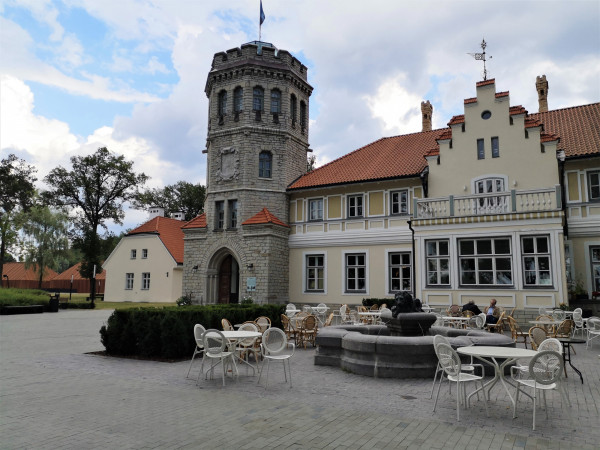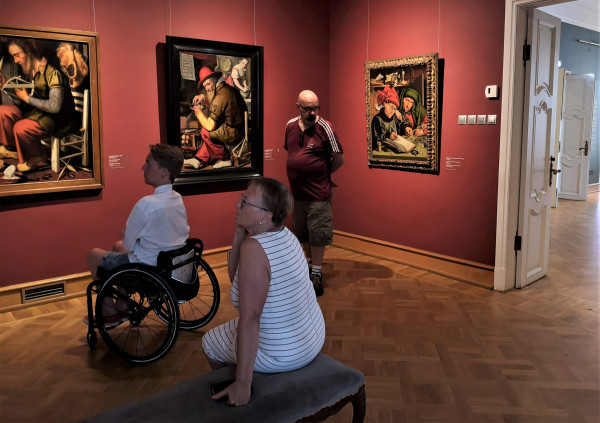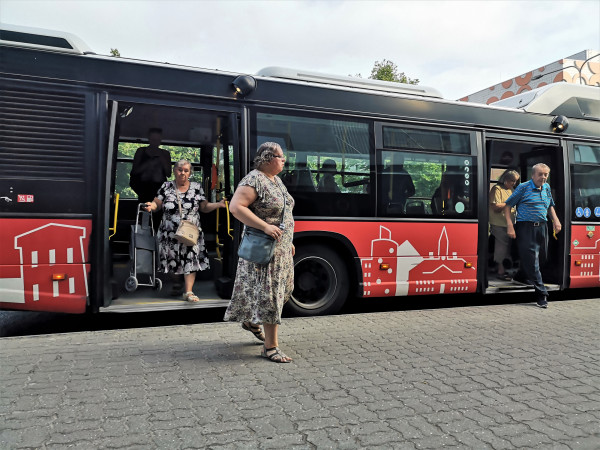Covid-19 in Estonia: without face masks and sorting people into groups
People in Estonia are reminded about the existence of Covid-19 only by the hand disinfectants available in public places and the fact that museums and most beautiful places can for now be visited without crowds. Restaurants and cafes serve all guests, masks do not have to be worn in shops or on public transport. Concerts and events take place. Estonia has returned to life.
In Estonia and Latvia, the cumulative 14-day rate of Covid-19 and the number of vaccinated are about the same, but life in the two countries is completely different: in Latvia life goes on with masks and sorting people into vaccinated and non-vaccinated, in Estonia - everyone is treated equally, without limiting the number of shoppers in stores and without masks in public places indoors. In Estonia, the requirement to wear a mask was lifted on June 6, when the cumulative number of cases of Covid-19 had fallen to 115 per 100,000 inhabitants (in May it was 300). In public places, of course, you can still see the reminders to disinfect your hands and observe a distance of 2 meters, but this is also the only thing that reminds tourists who have arrived in Estonia of Covid-19.

What are the rules for travelers?
According to the Health Board of Estonia, the 14-day cumulative number of Covid-19 cases per 100,000 inhabitants in Estonia yesterday was 39.73. The information provided by the Latvian Center for Disease Prevention and Control (CDPC), in turn, shows that the cumulative two-week incidence of Covid-19 in Latvia on Sunday was 35.8 cases per 100,000 inhabitants.
In the list of countries published by the CDPC every Friday, both Latvia and Estonia are currently on the green list, meaning, among the low-risk countries of the European Union and the European Economic Area. According to this list, the 14-day cumulative number of Covid-19 cases in Latvia is 43, in Estonia - 29 cases per 100,000 population. (EU data differs from national data).
Therefore, currently any Latvian resident (vaccinated, unvaccinated, Covid-19 recovered or not been sick) can enter Estonia without a test and without 10 days of self-isolation. Only the electronic declaration has to be submitted. (You can do that here). As before the pandemic, the traveler must of course have a valid passport or ID card with them. My Covid-19 certificate was not checked by anyone when leaving Latvia or entering Estonia. "Visit Estonia" representative Jana Kutšinskaja assured Neatkarīgā that when entering Estonia, the existence of this certificate is not currently checked for all tourists, but this does not mean that you can go to Estonia without it. The existence of declaration and certificate may be checked. Therefore, these documents must not be forgotten at home.
Wearing face masks in public places in Estonia is not a mandatory requirement, but a recommendation. While staying in this neighboring country for five days, I saw only one person wearing a face mask.
Since June 28, events can accommodate up to 1,000 people indoors, and 5,000 people in the open air, which opens up opportunities for events. Restaurants and cafes can work without a time limit and without sorting people. The only thing, as in Latvia, is to observe a distance of 2 meters between the tables.

When entering Latvia from Estonia, you must fill out a CovidPass. There are no other requirements or restrictions for those who have been vaccinated against Covid-19 or who have recovered from this disease. On the other hand, those who have not been vaccinated or have not recovered from Covid-19 must perform the Covid-19 test before crossing the Latvian border. Its price in Estonia is about the same as in Latvia - about 30-40 euros depending on the laboratory.
The best place for remote work
Looking at Estonia through the eyes of a tourist, it seems that life in this country has returned to how it was before the pandemic - people are eating in cafes, there are concerts and events, heat-weary people relax in the greenery and even dance in the evenings. However, the residents of Tallinn and Tartu, of course, still have a vivid memory of Covid-19. Since last spring, employees have been encouraged to work remotely, and although Tallinn has been recognized as the best place for remote work, people are longing for face-to-face meetings.
Big 7 Travel company has ranked Tallinn as the best city for remote work. One of the main reasons is the high degree of digitization. According to experts, 99% of Tallinn's public services are available online around the clock.
Life on pause opened up new possibilities
Last spring and this spring, due to Covid-19, a state of emergency was declared in Estonia (for a much shorter time than in Latvia). This spring, as in Latvia, cafes were temporarily closed (food could only be bought to take away), museums were closed, etc. This is a time that no employee in the Estonian tourism business would want to experience for the second time. This year, tourism in Estonia has decreased about 10 times compared to the time before the crisis. "Before, cruise ships stopped at the port of Tallinn every day, bringing tourists from Sweden, Russia, Spain, Germany, etc., and every day we saw tourists from these countries in our museum. At present, tourists mostly prefer to travel to neighboring countries, for example, from Latvia and Finland to Estonia and vice versa,” admit the guides working at the Estonian Open-Air Museum. They agree that traveling between neighboring countries at a time when Covid-19 still dominates the world is the safest way.

As in Latvia, in Estonia, employees working in the state tourism sector were paid downtime benefits when cafes, restaurants and museums had to be closed. Workers from Tallinn and Tartu museums, when asked by Neatkarīgā, admitted that it had allowed them to survive these difficult times. In addition, in some cases the benefit was as high as 100 percent of salary. The guide of the Estonian Maritime Museum said that the museum staff was happy to receive a full salary even when the museum was closed. However, this does not mean that employees were slacking off during the downtime. During this time, the staff of the Estonian Maritime Museum worked on arranging the funds. The Estonian Maritime Museum in Tallinn has two residences - the Tallinn city defensive tower Fat Margaret and the Seaplane Harbor, where the famous Estonian submarine is located.
Vabamu Museum of Occupations and Freedom used the forced downtime to create an audio guide in Latvian. Now e-Rihards takes tourists from Latvia through the entire museum exposition. (The stories that are heard in every hall of the museum have been recorded by Latvian actor Rihards Lepers.) Vabamu is a modern museum that uses modern technologies that make the museum's exposition feel alive and emotional.
Many cafes in Tallinn closed during the Covid-19 state of emergency and unfortunately not all of them have already reopened, for some the crisis may have turned out to be too heavy a burden. But there are some that used this downtime to create something new. Such is the case with the Rado restaurant in the center of Tallinn. It opened at a time when all other eateries were closed. Rado was created by Rado and Triinu, who say that they were a little crazy because they decided to open their own restaurant when the others were closing.
Triinu had dreamt of having her own restaurant since she worked at a bar in New Zealand. Rado would not be a proper head chef if he would not have the same dream. Now the opportunity knocked on the door and they knew that it won’t knock twice, so they decided to take the risk. Previously, they had worked together at the Ribe restaurant in Tallinn.
Café Spargel in Tartu, on the other hand, set up a new room during downtime to expand the number of people they could accommodate.
Hoping that the third wave won't come
In Estonia, 33% of the population is fully vaccinated, in Latvia - 31%. Unlike Latvian officials, who have already announced that the vaccination of 70% of the country's population will not be achieved by autumn, Estonian officials and even residents are convinced that Estonia will succeed. Estonia, home to just over 1.3 million people, has ordered 5,229,362 doses of vaccine, enough to vaccinate 2,764,681 people. At present, in Estonia, as in Latvia, anyone who wants to can get vaccinated (from the age of 12). In Estonia, the first to be vaccinated against Covid-19 were the most vulnerable groups, but from May 17 everyone could do so.

In Estonia, vaccination is steadily and relatively calmly continuing, although there are opponents of vaccination there as well. However, it is not such a big division in society there. Probably because vaccinated and non-vaccinated people are not set against each other.
*****
Be the first to read interesting news from Latvia and the world by joining our Telegram and Signal channels.
